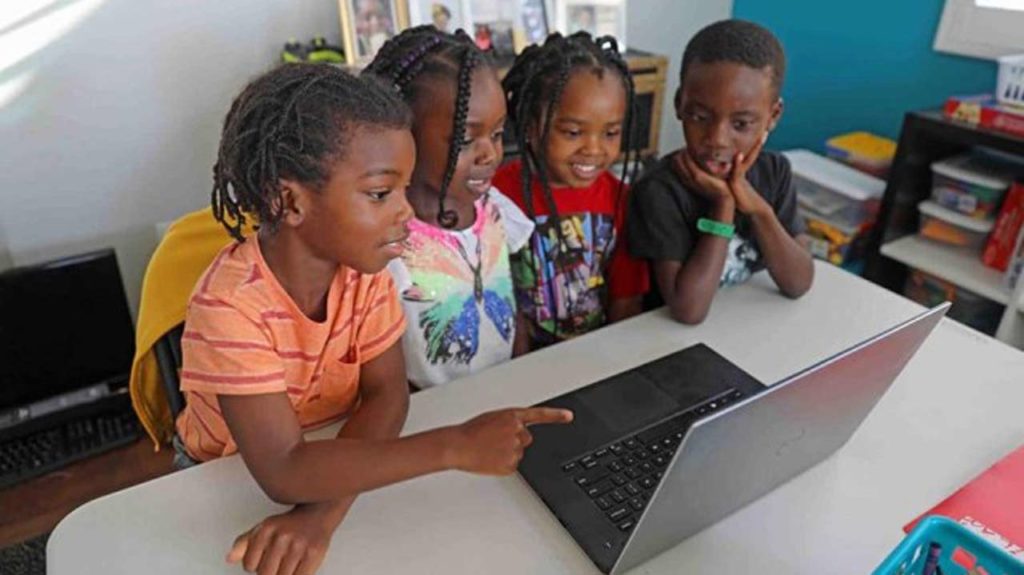•Most active on WhatsApp, Facebook, Instagram and YouTube
Findings have revealed that children in Nigeria spend unduly long time engaged on digital technology daily. They do this through watching television, playing video games or surfing the Internet. The Nigerian child on the average can amass screen time for lengths of up to three hours per day. In extreme cases some children clock up to 10 hours or more screen time per day verging on addiction.
The 2020 Child Online Safety Index report, which revealed this, showed higher levels of disordered use of technology among children in Nigeria, placing her sixth from the bottom of the list of 30 peer countries.
The rating is based on four indices – the severity of gaming disorder symptoms; the percentage of children at risk of gaming disorder; the severity of social media disorder symptoms; and, the percentage of children at risk for social media disorder.
The report, which was conducted by the Nigerian Communications Commission (NCC), noted that digital technology addictions manifest in different forms including excessive viewing of video clips, compulsive video game-playing and uncontrolled browsing and chatting on social media.
It explained that disordered use of technology arises when an individual engages in online activities at the cost of fulfilling daily responsibilities or pursuing other interests and without regard for the negative consequences.
Parental educational level, age at first use of the Internet, and the frequency of using social networking sites and gaming sites are found to be associated with excessive Internet use among children.
Seeking to probe the frequency and online activities of the Nigerian child, the survey, carried out across the country, uncovered that 85 per cent of the urban 11-16 years-old children browse and chat on social networking sites every day.
The use pattern is different with the 11-16 years-old children in the rural areas where only 20 per cent does chatting and browsing on social media every day. Watching video clips is an activity that rural 11-16 year-old children spend 48 per cent of their online time doing every day.
The report observed that COVID-19 heralded an increase in the number of both rural and urban children using the Internet to conduct their schoolwork at 57 per cent urban and 46 per cent rural daily average.
Accordingly, it is evident that there are remarkable differences between urban dwellers and their peers in the rural areas in the way and frequency with which each demographic uses digital technology.
The report noted that prevailing trends indicate that Nigerian children’s access to technology devices and the Internet will continue to increase, which will correspond to both increased benefits of being online and increased risks. It stressed that the children are particularly vulnerable not because of the expansion of access but from unawareness of the possible risks and the apparent lack of safeguards in place.
Globally, the report observed that children like to watch video content and listen to music and spend time on social media. This is also true for children in Nigeria, who are most active across social media networks with their most popular Apps being WhatsApp, Facebook, Instagram and YouTube in that order.
It stressed that the Nigerian children also spend a lot of time playing already downloaded video or educational games on their mobile devices. The results revealed that WhatsApp is the favourite social networking app for children in Nigeria at 87 per cent followed by Facebook at 85 per cent, Instagram at 57 per cent.
YouTube and Messenger ranked jointly at 54 per cent with Twitter and Imo at the rear at 30 per cent and eight per cent respectively.
According to the report, the risks children face online fall into four broad categories namely content, contact, conduct and contract.
Content risk contains nudity, sexual images or movies, hateful or violent material or information that advocate the use of drugs, tobacco or alcohol.
Besides, the report noted that the Internet’s influence can also come from other media such as television, song lyrics, magazines, movies/videos, and video games.
On the other hand, contact risk happens where children are involved in an adult initiated online activity for example, grooming, stalking, and sexual exploitation.
The report said the most typical scenario of Risky Contact is that a sexual predator takes advantage when a child discloses vulnerability online. “The predator offers to be an understanding and supporting adult and starts building a manipulative relationship with the child. When this process, called grooming, is completed, the potential victim often readily travels to meet the predator, even if aware of the adult’s sexual intentions.”
Conduct risk comes to the fore where children are victims or perpetrators in peer-to-peer exchanges e.g. bullying, revenge porn, self-harm, destructive and violent behaviours such as “happy slapping.” Others include exposure to radicalisation, racism, tribalism, hate speech and other discriminatory materials and images.
Meanwhile, Contract or Commercial risks happen when children are exposed to inappropriate advertising, marketing schemes or hidden costs such as targeted advertising, fraud and scams. The report, which observed that some companies spam children through virtual world sites to sell products, said this raises the issue of user consent and how this should be obtained.

